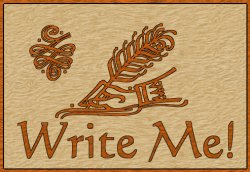Welcome to the Bass Rhythm Page!
On the diatonic accordion, the basses serve two primary functions; they keep the rhythm, and they add harmony to the melody. On this page I will be discussing the rhythmic aspects of the bass. See the following page for a discussion of the harmony of basses.
Like so many things pertaining to the diatonic accordion, the basses appear to be quite simple on the surface, but upon closer inspection, they become much more complex. The first difficulty most players encounter is the coordination of the left (bass) hand with the right (melody) hand. With some practice this is quickly overcome in most cases, especially by those who have experience playing other instruments. With due diligence, a player will soon master the standard rhythms of waltz (3/4), polka (2/4), and jig (6/8). For many, there will be no need or desire to progress beyond these three very common rhythms, however, with the mastery of these three, we have really barely scratched the surface of rhythm. Before I go further, perhaps I should point out that rhythm and time signature, though related, are not the same thing. For example, both the waltz and the mazurka have a time signature of 3/4, however, the rhythms are not the same. The typical mazurka rhythm is 2 eighth notes (the first beat) followed by 2 quarter notes with the accent falling irregularly on the 2nd or 3rd beats, while the typical waltz consists of 3 quarter notes with the strong beat falling on the first beat. There are many other similar examples which could be given. It is not uncommon for musicians to treat all 3/4 time tunes as waltzes, all 2/4 time tunes as polkas etc., regardless of whether that is the actual rhythm of the tune. This is simplistic, and often prevents the true character or feel of the tune from coming through. It can be disasterous in a dance setting, as the dance will not fit the tune well. I would urge the musician, where possible, to try to find out the defining characteristics of a certain rhythm before playing the tune.
Accent, or beats which receive a greater or lesser emphasis in playing, are an important part of rhythm. Tempo, or the speed at which the beats are played, can also be considered part of the rhythm. Once you know the basic count of the rhythm, and can play it at an even speed, you should try to accent the proper beats and play at a proper tempo. The accent can be achieved by extra effort on the bellows on the proper beat, this is not always so easy to accomplish in practice, but fortunately, the diatonic nature of the buttonbox can aid in this respect. The smaller bellows are more responsive than say, a piano accordion's larger bellows, so it takes less effort to produce greater results. Usually, the tempo is dictated by the dance steps. One should play neither too fast nor too slow for the dancers. With beginning button accordionists it is common to want to play too fast for proper dancing. Interestingly, it is also common for inexperienced or unskilled dancers to want to dance too fast as well. Inexperienced dancers and musicians can end up reinforcing each other's bad habits, and it is wise to keep this in mind. The result is poorly executed dance and sloppy playing.
Another tendency for beginning, and even some intermediate players, is to hold on to the bass buttons too long. This can be especially easy for tunes played in a cross rows style, where forced bellows changes are less common. The goal in all but a few rare cases should be for exceedingly short and crisp basses. In my opinion this ought to be practiced in an exaggerated, almost extreme way, as it builds accuracy, good rhythm, finger dexterity, and speed. It is relatively easier to allow your basses get less crisp than to take lethargic bass playing and try to make it crisp. But, why is it better to have crisp basses? Several reasons come to mind:
- A light bass line feels more energetic and bouncier...thus more danceable.
- It sounds and feels more accurate.
- It reduces your consumption of air (the basses require a lot of air).
- It prevents the basses from overpowering the melody (especially on instruments that are unbalanced to begin with - such as helikon bass instruments)
- It allows time between bass beats to reverse bellows or shift hand position if that is necessary
- In the event that you can't strike the proper bass for the harmony because of bellows direction required for the melody, a short crisp bass sounds less wrong than a long drawn out bass....sometimes it even goes unnoticed.

